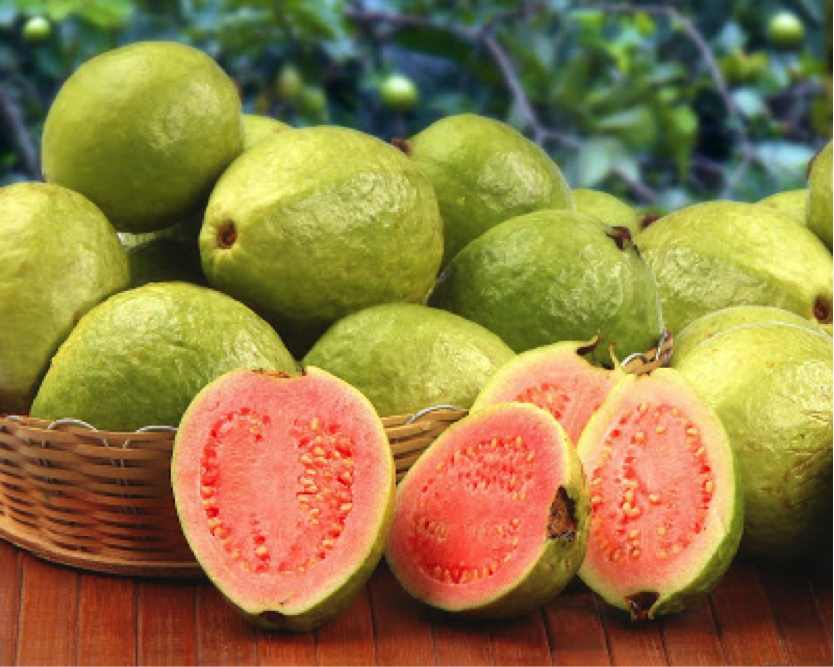
If there is one thing that we have learnt regarding FODMAP testing here at Monash University, it is that there are a HUGE number of factors that can influence the FODMAP content of a food. This is why it is very difficult to decide whether a food is high or low in FODMAPs simply based on an ingredients list. Different food processing methods in particular can influence the FODMAP content of a food.
The classic example here is sourdough spelt bread, where spelt flour by itself is a high FODMAP food, the sourdough fermentation process used to make it into bread results in the end product being low FODMAP. In the same way, the natural process of ripening can affect the FODMAP content of certain fruits.
We recently tested guavas for our app and made an interesting discovery when both ripe and unripe guavas were tested. Our testing found that whilst a serve of well-ripened guava was low in FODMAPs, an equivalent serve of unripe guava was high in FODMAPs. The ripening process therefore results in an overall reduction in the total FODMAP content of guavas.
The opposite is true if we consider sugar bananas, where the ripening process results in a total increase in FODMAP content. This is just another reason why the food testing we do here at Monash University is so important, as we know that different foods behave very differently in terms of FODMAPs, even when they are subject to the same processing methods/natural conditions.
So now that ripe guavas have been given the green light, you can enjoy the following recipes for making guava jelly (jam) and guava and rosemary glazed chicken breast. Guava jelly (jam) is a delicious traditional Colombian food that can be used as a low FODMAP alternative to quince paste with your favourite cheese, spread on toast or used as a fantastic marinade for chicken, duck or turkey.
Guava Jelly (jam)
INGREDIENTS
METHOD
Guava and rosemary glazed chicken breast
Serves: 4
....................................................................................................
INGREDIENTS
..............................................................................................
METHOD
| NUTRITION INFORMATION per serve | |
|---|---|
| Energy | 1764KJ |
| Protein | 41.4g |
| Fat | 20.6g |
| - Saturated fat | 4.6g |
| Carbohydrates | 17.1g |
| Sodium (If salt not added to recipe) | 115mg |